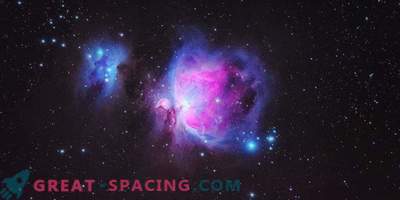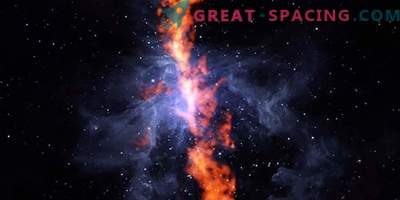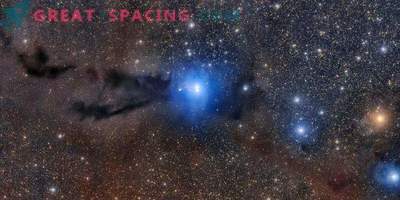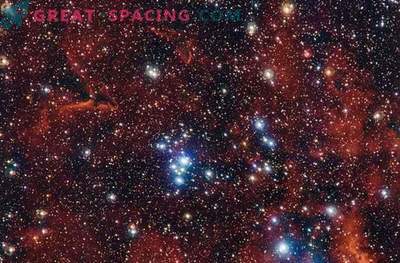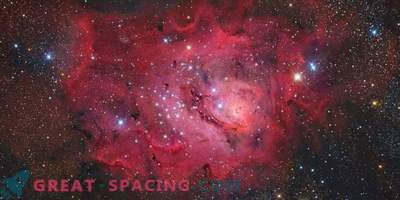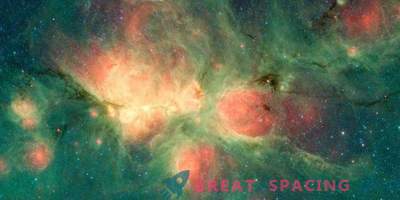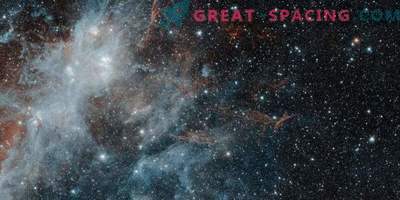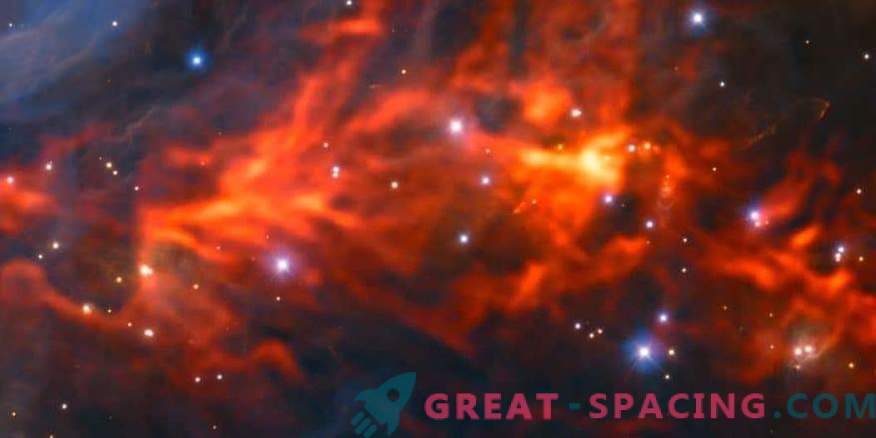
This magnificent snapshot shows a part of the famous Orion Nebula — a region of star birth, distant from us by 1350 light years. It combines a mosaic of millimeter images from ALMA, the 30-meter IRAM telescope (red) and the IR-surveys of the HAWK-I instrument on the Very Large Telescope (blue). A group of bright white and blue stars on the left - Trapezium Cluster
In this amazing photograph, a part of the famous Orion Nebula is displayed - a region of star birth, distant from us by 1350 light years. It combines a mosaic of millimeter images from ALMA, the 30-meter IRAM telescope (red) and the IR-surveys of the HAWK-I instrument on the Very Large Telescope (blue). A group of bright white and blue stars on the left - Trapezium Cluster.
The thin, threadlike structures observed in the large image are long threads of cool gas, visible only by millimeter wavelength telescopes. They cannot be seen in optical or infrared wavelengths. Therefore, ALMA is the only tool for studying such species. Gas is important, as it causes the appearance of new stars. It is gradually destroyed by its own gravity, until it shrinks to the state of a protostar. Researchers studied these threads to understand their structure and composition. ALMA used to search for the signature of diazenilium. With its help, it was possible to identify a network of 55 threads.
The Orion Nebula is the closest region of mass star birth. Therefore, it is actively studied by scientists who are trying to understand the process of the formation and development of stars in the first few million years. For this image, 296 separate data sets from ALMA and IRAM were used.
